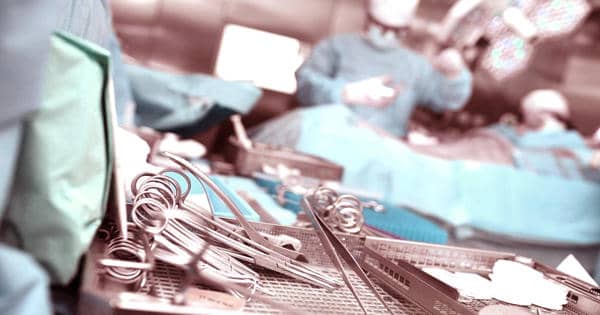Researchers developed surgical tools with smart sensors for advance cardiac surgery
Researchers developed new surgical tools with smart sensors that can advance cardiac surgery and therapy. Novel surgical instruments equipped with an advanced sensor system could dramatically improve the diagnoses and treatments of several heart diseases and conditions, reports a new study. Researchers developed a new class of medical instruments equipped with an advanced soft electronics system that could dramatically improve the diagnoses and treatments of a number of cardiac diseases and conditions.
Researchers applied flexible and stretchable matrices of electrode sensors and actuators, with temperature and pressure sensors, to a balloon catheter system, usually used in minimally invasive surgeries or ablations to treat conditions like heart arrhythmias. The new system, which conforms better to the body’s soft tissue than current devices, can perform a variety of functions, including – simultaneous in vivo measurements of temperature, the force of contact, and electrophysiological parameters; the ability to customize diagnostic and therapeutic functions; and real-time feedback. It can drastically decrease the length of invasive ablation procedures and exposure of patients and doctors to X-ray radiation.
“Researchers developed a new class of medical instruments equipped with an advanced soft electronics system that could dramatically improve the diagnoses and treatments of a number of cardiac diseases and conditions.”
THE SITUATION
Many minimally invasive surgeries rely on catheters inserted into the body through small incisions to conduct diagnostic measurements and therapeutic interventions. Physicians, for example, use this catheter-based approach to map and treat irregular heartbeats, or arrhythmias, often by locating and killing or ablating cardiac tissue area which is causing the arrhythmias. A variety of roles can be performed by the new system, which conforms better to the body’s soft tissue than current devices: the force of contact and electrophysiological parameters, simultaneous in vivo measurements of temperature, and therapeutic functions; and real-time feedback.
Though widely used in surgery, the current catheter-based approach has a number of drawbacks. The rigidity of today’s catheter devices means they do not conform well to soft, biological tissues, impacting high fidelity mapping of an organ’s electrophysiological signals. Current devices make contact with only a small part of an organ at a time, making it necessary to constantly move a probe around, lengthening medical procedures.
THE BENEFIT
The new class of instruments will allow physicians to obtain a rich set of electrophysiological information and to perform surgeries in shorter times using a single instrumented catheter system. By outfitting a balloon catheter with advanced organ conformal electronic components, sensors and actuators, the researchers overcame the flaws of current systems. Specific advances over previous systems include:
- Instrumented sensors and actuators in multiplexed array formats can probe the complex nature of tissues, specifically in the beating heart.
- The device’s multilayered and multifunctional architecture with combined diagnostic and therapeutic functions enhances a number of minimally invasive cardiac procedures, including radiofrequency or irreversible electroporation ablation
- Capabilities for real-time feedback control, enabled by simultaneous, multimodal operation of sensors and actuators.
















